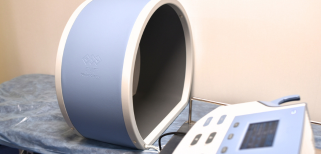




Health Information



Learn about Magnetotherapy

Learn about Magnetotherapy (by Sportsperformance Physiotherapy)
Background of Magnetotherapy
Magneto therapy has ancient roots, with the earliest recorded uses dating back millennia. Over time, technological advances improved our understanding of how magnetic fields impact biological systems. Pioneers experimented with both static natural magnets and early electric current stimulation for healing fractures and joint pain. However, challenges with infection and invasiveness led researchers to emphasise non-contact pulsed magnetic field treatment from the 1970s onward. While mechanisms remain unclear, magnetic therapy gained popularity for accelerating musculoskeletal recovery in a noninvasive manner. Though proponents attest to its benefits, rigorous clinical studies are still needed to validate efficacy and inform best practices for specific applications. The history of magneto therapy is one of both time-honoured empiricism and ongoing scientific investigation.
What is Magnetotherapy?
The use of magnetic therapy for pain and inflammation has been a practice for centuries, but the effectiveness of magnetic devices for pain management remains uncertain. While some people use magnets to alleviate pain, research on static magnets, which produce constant magnetic fields, is limited and inconclusive. Products such as wristbands and jewellery that contain static magnets are marketed as pain-relieving, but there is no evidence that they are effective in managing any type of pain.
Electromagnetic therapy, on the other hand, involves the use of electromagnetic fields to alleviate pain. Electromagnetic devices, such as pulsed electromagnetic field therapy (PEMF), target muscles and joints to relieve pain. While studies indicate that PEMF may be effective for certain types of musculoskeletal pain and osteoarthritis, the evidence is mixed. Overall, electromagnetic therapy appears to be safe for pain treatment.
What are some common effects or benefits of Magnetotherapy?
-
Analgesic effects: reduce pain and discomfort in various parts of the body, including the back, neck, joints, and muscles.
-
Antiphlogistic effect: anti-inflammatory properties that can help reduce swelling, inflammation, and pain caused by various conditions, such as arthritis, tendonitis, and bursitis.
-
Acceleration of healing of bone tissue, trophic effect: stimulate bone growth and repair, which can be especially beneficial for individuals with fractures, osteoporosis, and other bone-related conditions.
-
Myorelaxation, spasmolytic effect: muscle-relaxing properties that can help alleviate muscle tension, spasms, and cramps.
-
Antiedematous effect: reduce swelling and edema, which can be caused by a variety of conditions, including injuries, surgery, and chronic diseases.
-
Other effects



